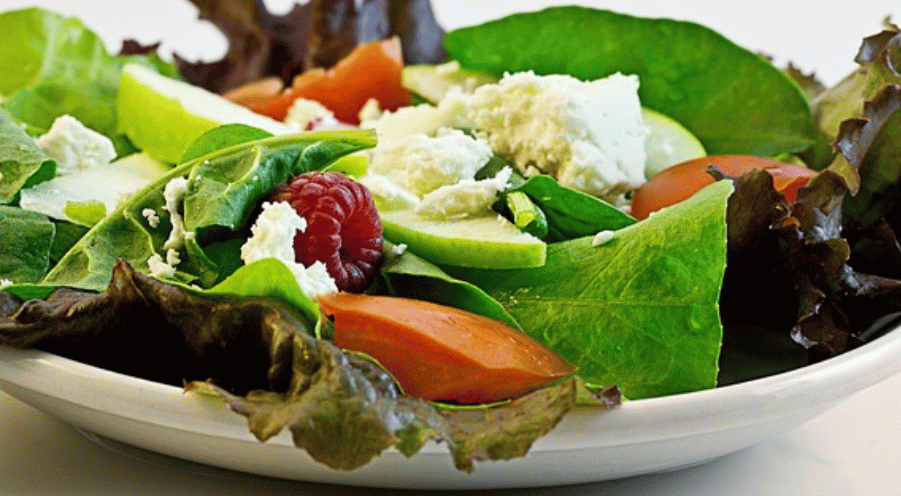Limited time discounts on healthy products!
How to Make a Gut Healthy Plate: Eating for a Happy GI Tract
How to make a gut-friendly plate involves eating unprocessed foods and making lifestyle changes so the your GI tract can be as healthy as it can be
HEALTHY EATING
Janine Reece
10/10/20257 min read
Understanding Gut Health
Gut health plays a big role in keeping us healthy. The gastrointestinal tract is not only responsible for digestion but also houses the gut microbiome, a complex community of microorganisms that significantly influences health. Remember, 70% of your immunity is in your gut.
But for those of us who are trying to overcome gut problems, this could be more complicated.
First of all: what do all these terms mean? I’ll make it clear as I go.
(Microbiome- the microorganisms in your digestive tract, or in other words, your gut.)
This microbiome is essential for breaking down food, absorbing nutrients, and help getting rid of waste. It also contributes to the production of vitamins, such as B vitamins and vitamin K, which are vital for several bodily processes.
To have the best gut health, it is important to have a diet that feeds the microbiome. Foods rich in fiber, such as fruits, vegetables, and whole grains, support the growth of beneficial bacteria.
Probiotic-rich foods, including yogurt, kefir, and fermented products, further add to good gut flora. Conversely, diets high in processed foods and sugar can negatively affect gut health, leading to various gastrointestinal disorders.
Basically, maintaining gut health is important for digestive efficiency, immunity, and mental wellness. ( It has been established that the mind and the physical body are connected. What affects one, affects the other.
A good diet with nutrient dense foods is essential for ensuring a happy GI tract.
Key Foods for a Gut Healthy Plate
Creating a gut-healthy plate requires the inclusion of specific foods that support the digestive system and promote a thriving gut microbiome.
What Does It Mean To Eat The Rainbow
The term Eat The Rainbow means to add fruits and veggies of all colors into your diet. This means you will get a variety of phytonutrients, because all of these plants are different. As well as adding different kinds of fiber to your diet, they all have different vitamins and minerals to aid your health.
I personally feel that God created all of these fruits and veggies with different colors, so that we would be attracted to those plants that would help keep us in the best possible health.
Central to your ideal plate are unprocessed fruits and vegetables, which are rich in vitamins, minerals, and dietary fiber. Fiber plays a critical role in digestion, as it aids in regular bowel movements and serves as food for beneficial gut bacteria. Different fruits and veggies have different kinds of fiber, that's why it is important to include several kinds of fruits and veggies in your overall diet.
Foods such as apples, bananas, berries, leafy greens, and cruciferous vegetables should be prioritized for their fiber content and nourishing properties.
A colorful diet helps you avoid certain diseases such as colon cancer and diabetes, as well as helping boost your immune system. I found this out coming back from chemotherapy.
Each color group of veg or fruits offers a unique set of health benefits, such as red for heart and purple for brain function, and so on.
Fresh fruits and veggies- straight from a garden, in their original form is what is meant by unprocessed. Frozen is okay as long as nothing has been added. (Check the label.)
Canned may not be what you want, as they add sugar and salt sometimes, depending on whether the contents are savory or sweet. They also may have additional additives/chemicals you don’t want.
In addition to fruits and vegetables, whole grains are part of a gut-friendly diet. Whole grains, such as brown rice, quinoa, oats, and barley, are high in fiber, particularly soluble fiber, which can help manage cholesterol levels and improve gut health.
These grains also contain nutrients like B vitamins, iron, and magnesium, which contribute to your overall well-being. Including a variety of whole grains in meals can help make you feel full and provide energy throughout the day.
Legumes, including beans, lentils, and chickpeas, are another food group for nurturing a healthy gut. These foods are excellent sources of protein and fiber, which can aid digestion and promote a balanced gut flora.
Additionally, legumes contain prebiotics—compounds that feed beneficial gut bacteria, bringing a variety of microbes to the gut microbiome. Incorporating beans into salads, soups, or as a meat substitute can improve gut health significantly.
Finally, fermented foods such as yogurt, kefir, sauerkraut, and kimchi provide live probiotics, which are another good thing you can do for your gut health.
Probiotics are known to restore the natural balance of gut bacteria and help along digestive functions. By adding these key foods into your daily meals, you can effectively support your GI tract, leading to improved digestion and overall health.
Fresh fruits and veggies- straight from a garden, in their original form is what is meant by unprocessed. Frozen is okay as long as nothing has been added. (Check the label.)
Try To Eliminate As Much Processed Food As Possible From Your Diet
Elimination of processed foods is the second step in your journey to a healthy gut.
This one is not so easy - we are all addicted to our chips, snacks, candy, bread and other items - all of these are considered ‘processed.’
Processed foods are foods that have been altered from their natural state through various methods like cooking, canning, or adding ingredients. While some processed foods are minimally altered and can be part of a healthy diet, others, known as ultra-processed foods, are high in unhealthy fats, sugars, and sodium and can negatively impact health.
I decided I would keep the processed foods/carbs, that were important to me, (sparingly), and just eliminate the ones I didn’t like very much.
So I kept French bread, the occasional flour tortilla, (bread once a week), and pasta (once a month). I really love pasta, so it would be impossible for me to give it up- I would be constantly cheating. This way I have one meal a month as a pasta meal and I can stay on my diet plan. (I make my own pasta sauce, so I know it is unprocessed.)
I gave up chips, candy, (I have dark chocolate once a month), and cake and cookies. Don’t have much of a sweet tooth.
You can through your processed foods and decide what you want to occasionally keep in your diet, and what your are ok with not buying again.
Tips for Building Your Gut Healthy Plate
Creating a gut healthy plate involves a mindful selection of ingredients that are not only nutritious but also increase the overall wellbeing of your GI tract. Here are some practical tips to help you assemble a balanced and gut-friendly meal:
include a variety of colorful, unprocessed fruits and vegetables
(aim for at least five servings a day to ensure you are getting a broad spectrum of nutrients and fiber)
add dark leafy greens such as spinach or kale
add fibrous vegetables like broccoli, carrots, and bell peppers
try different cooking methods, such as steaming or roasting, to increase the natural flavors
Proceed with adding all these fresh fruits slowly.
Add a few at a time. Increasing so much fiber all a once, could give you GI upset, with bloating and gas.
Another important aspect of a gut healthy plate is portion size. (Most of us eat to much at any given meal, but especially dinner.) It is best to fill half your plate with fruits and vegetables, a quarter with whole grains, and the final quarter with lean proteins.
Whole grains such as quinoa, brown rice, and whole wheat pasta are options that provide both fiber and nutrients.
Protein sources can include legumes, nuts, seeds, and lean meats. Additionally, consider varying your protein sources to include plant-based options, which contribute positively to gut health.
Want to plan for gut health? Try this:
meal planning can help you here, in improving your gut health
take the time to plan your meals for the week, ensuring that each dish includes gut-friendly ingredients
make a grocery list so you know what to buy
as you gradually use up food you already have, (which might not be gut friendly), gradually add in more gut happy choices.
try preparing some meals in advance to allow for better portion control and help you resist the temptation of processed foods
adding herbs and spices like ginger, garlic, and turmeric into your recipes can enhance flavor while also offering anti-inflammatory properties beneficial to your gut
plus with all the added flavor that herbs can bring, you may find you don't need as much added salt
encourage yourself to try new recipes that focus on gut health
Explore different cuisines and cooking styles that show you wholesome ingredients, making healthy eating both exciting and easy to do. Making small, consistent changes can lead to lasting benefits for your GI tract.
Lifestyle Changes for Optimal Gut Health
Maintaining the best gut health requires more than just a careful selection of foods; it also involves lifestyle changes that support the gastrointestinal (GI) tract's functioning.
One fundamental aspect of this approach is hydration. Adequate water intake plays a crucial role in digestion and nutrient absorption. If your are an adult, you probably need to be drinking 7- 8 glasses of water a day. No, coffee , tea, and sodas don't count. (If you are being treated by a physician for disease or condition, check with them before adding more water to your day.)
Water helps to break down food, enabling good nutrient uptake and prevents constipation. Therefore, drinking sufficient amounts of water daily is essential to promote a healthy gut.
In addition to hydration, regular physical activity is vital for maintaining gut health.
Exercise encourages regular bowel movements and can have an effect on the composition of gut microbiota, promoting a balanced of different microbes in your gut.
Engaging in moderate physical activities, such as walking, cycling, or yoga, not only boosts overall health but also contributes to better GI function. Aim for at least 150 minutes of moderate activity weekly to support your gut and general well-being.
Stress management is another crucial element that impacts gut health significantly. Chronic stress can disrupt the gut microbiome, exacerbate digestive issues, and lead to inflammation.
Incorporating stress-reducing techniques, such as mindfulness, meditation, and deep breathing exercises, can help both mental and gut health. Establishing a consistent routine for lowering your stress allows for better digestion and a more resilient gastrointestinal system.
Sufficient sleep is another area you need to support the body's natural recuperation processes, including the digestive system.
Inadequate sleep is linked to a higher risk of gastrointestinal disorders and hinders gut microbiota. Stick to a regular sleep schedule and create a good sleep environment, and you will greatly increase the quality of your sleep, again benefiting gut health.
By integrating these lifestyle changes—hydration, physical activity, stress management, and sleep—you can get a healthier gastrointestinal tract.
This comprehensive approach emphasizes the importance of not only what we eat but how we live, promoting the best gut and overall health.


All content on the website is intended for information purposes only, and is not intended as medical advice. Any actions taken based on my content are taken at your own risk. You should seek advice from your doctor prior to starting any diet. If you are being treated by a physician and been prescribed medication, you should seek advice before stopping or altering any medications.


Get in touch
Have questions? Comments?
Email me direct ... at reecejanine85@gmail.com
